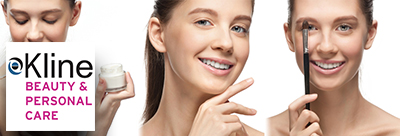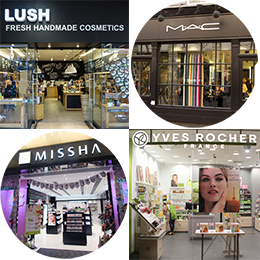The boutique retailer channel, also called freestanding stores or vertically-integrated retailers, has been one of the hottest channels in the beauty industry for more than a decade, but it is also one of the least tracked in terms of data coverage. Leveraging Kline’s long history of successfully monitoring the specialty stores channel through its Beauty Retailing report series, Kline has announced a new study, Boutique Beauty Retailers: Channel Analysis and Opportunities, which will offer in-depth insights into the channel. In the following interview, Carrie Mellage, Kline’s Vice President of Consumer Products Practice, gives her perspective on the freestanding store channel and what this new study will offer.
When did the concept of boutique retailing become a factor?
The explosion of Bath & Body Works in the early 1990’s was a huge disruption to the beauty industry. Although these types of retailers had been around for some time, none had been so quick to win the hearts of shoppers or a top spot on the leaderboard.
Which players are winning today?
Looking at the larger chains, Lush and L’Occitane have been among the most successful. Both have consistently registered growth above the industry average and been busy opening new doors each year. Lush’s strength is its innovative fresh and handmade products with minimal use of preservatives and packaging, sold in a fun and inviting atmosphere. Its products are made from fresh organic fruits and vegetables, and its stores are made to resemble a food market. L’Occitane’s strength is in its local sourcing of natural and organic ingredients from the Provence region of France and distinctive store design that captures the spirit of Provence. Both retailers have a unique premise—something that is essential to win in this channel.
Which multi-channel marketers have been successful in this channel?
The Estée Lauder Companies was one of the first traditional marketers to realize the potential of this space and has done an outstanding job here. The use of freestanding stores has been a core element of MAC’s rise to global powerhouse status, a strategy it continues to employ as it enters new markets, especially those that lack a developed prestige channel like Brazil. Lauder has also successfully used this model with some of its other brands, including Aveda, Jo Malone, and Origins, as part of an omnichannel strategy to be seamlessly available to its customers in a variety of outlets.
Who are some of the newcomers to watch?
Kiko, an Italian brand, has been busy opening stores around the world. It debuted in the United States only two years ago and now has more than 20 doors here. L’Oréal started opening doors for its recently acquired NXY cosmetics brand only a few months ago and is already slated to open its twelfth store this week. There is also a myriad of Korean players that are growing quickly and constantly offering new, innovative products, including TheFaceShop, Tonymoly, and Innisfree, just to name a few. Aesop, Inglot, and Malin+Goetz have also been establishing a presence and could become larger contenders down the road.
Which countries will this new study cover?
This first edition will take a close look at four key markets: France, South Korea, the United Kingdom, and the United States. We chose these countries because they are where the most boutique retailer chains are headquartered. France is home to Yves Rocher, L’Occitane, and Le Labo. In South Korea, we have Missha, It’s Skin, Etude House, those companies mentioned earlier, and many others. Molton Brown, The Body Shop, Penhaligon’s, Lush, and The Organic Pharmacy all hail from the United Kingdom. The United States is headquarters to more than 30 vertically-integrated beauty retail chains, with Bath & Body Works, Victoria’s Secret, MAC, Bare Escentuals, and Kiehl’s at the top of the list. Of course, there are important boutique beauty retailers that are headquartered elsewhere, like Australia’s Jurlique or Brazil’s O Boticário, but there is a definite concentration in these four markets.
How will this study help beauty marketers and retailers?
There has been a void of information on this channel for far too long. This report series will focus exclusively on this channel of distribution and deliver rich insights on channel size, growth, door counts, and key success factors like never before. We will assess each retailer’s competitive focus and strengths, in addition to a number of productivity measures including average sales per square foot and traffic patterns. The boutique retailer channel has become a critical part of the beauty market and is often where threats and opportunities emerge. Boutique Beauty Retailers: Channel Analysis and Opportunities will help industry participants understand and react to those realities. It no longer has to be a blind spot.
Follow the latest market trends via our NEW! Beauty & Personal Care LinkedIn Showcase Page.


